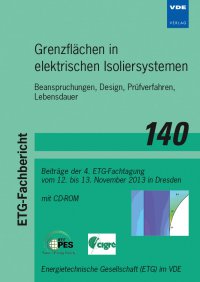Computational design methods for end-winding corona protection
Conference: Grenzflächen in elektrischen Isoliersystemen - Beiträge der 4. ETG-Fachtagung
11/12/2013 - 11/13/2013 at Dresden, Deutschland
Proceedings: Grenzflächen in elektrischen Isoliersystemen
Pages: 5Language: englishTyp: PDF
Personal VDE Members are entitled to a 10% discount on this title
Authors:
Wei, Moyan; Speck, Joachim; Großmann, Steffen (Technische Universität Dresden, Deutschland)
Abstract:
The stator insulation system of rotating high voltage machines generally consists of main-wall insulation, outer corona protection (OCP) and end-winding corona protection (ECP). ECP, a thin layer of material which has nonlinear conductivity, is applied in the end-winding area of the stator to control the tangential electric field. A side effect of this ECP application is the inevitable heating due to the resistive loss of the layer. Based on these points, sophisticated and quantified design work for stator insulation system of machines which have higher rated operating voltage are required. In this contribution two tools based on computational methods were developed to support the ECP design work. Both of these tools were verified by means of experiments. By using these tools more in depth information about the behaviour of ECP system were gathered.


